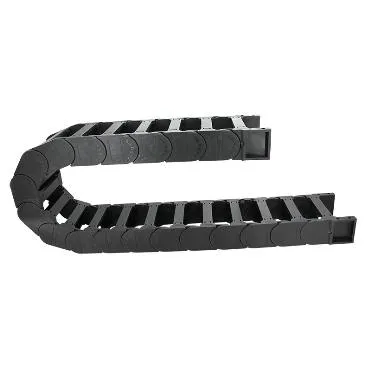Guide to Cable Track
A cable track is an essential component in modern machinery and automation systems, designed to organize and protect cables, hoses, and wires. They ensure efficient cable management, reduce wear and tear, and enhance the safety and performance of machines. This article delves into different types of cable tracks, including flexible cable tracks and plastic cable tracks, their benefits, and common applications.

What is a Cable Track?
Cable tracks, also known as cable carriers or drag chains, are structures that guide and protect cables and hoses in dynamic applications where movement is involved. They are made from various materials, such as plastic, steel, or hybrid combinations, depending on the application and environment. The tracks prevent cables from tangling, bending excessively, or being damaged during motion.
Types of Cable Tracks
Flexible Cable Track
Flexible cable tracks are designed to handle complex and multi-directional movements. These tracks are ideal for applications with tight spaces or machinery requiring cables to bend and twist without damage.
- Key Features:
- High flexibility for dynamic movements.
- Lightweight yet durable construction.
- Suitable for high-speed operations.
Plastic Cable Track
Plastic cable tracks are lightweight, corrosion-resistant, and cost-effective, making them suitable for a wide range of applications. They are commonly used in industries like automation, robotics, and packaging.
- Key Features:
- Easy to install and maintain.
- Resistant to chemicals and wear.
- Noise reduction during operation.
Steel Cable Track
Steel cable tracks are heavy-duty and designed for demanding environments, such as heavy machinery, mining, and offshore applications. They provide superior strength and durability.
- Key Features:
- High load capacity.
- Withstands extreme temperatures and harsh conditions.
- Long lifespan.
Hybrid Cable Track
Hybrid cable tracks combine materials like plastic and steel to provide a balance of flexibility, strength, and durability. These are used in applications requiring both lightweight design and high load capacities.
Benefits of Cable Tracks
Cable Protection
Cable tracks prevent excessive bending, tangling, and abrasion, which can damage cables and hoses. This extends the lifespan of cables and reduces maintenance costs.
Improved Safety
By organizing and containing cables, tracks minimize tripping hazards and ensure a safe operating environment.
Increased Efficiency
Proper cable management enhances machine efficiency by ensuring smooth and uninterrupted operation.
Reduced Downtime
Protecting cables from wear and tear decreases the likelihood of equipment failure, resulting in less downtime.
Customizable Designs
Cable tracks come in various sizes, shapes, and materials to fit specific applications, providing tailored solutions for unique machinery needs.
Applications of Cable Tracks
Industrial Automation
In factories and manufacturing plants, cable tracks are used to guide cables in robotic arms, conveyor belts, and automated machinery.
CNC Machines
Cable tracks protect the wires and hoses of CNC machines, ensuring precise and uninterrupted operations.
Robotics
Robots require flexible cable tracks to manage the movement of cables and hoses during intricate operations.
Material Handling Equipment
In cranes, forklifts, and other material handling machines, cable tracks organize and protect hydraulic hoses and power cables.
Medical Equipment
Medical devices with moving parts, such as imaging systems or surgical robots, use cable tracks to maintain cable integrity and reliability.
Factors to Consider When Choosing a Cable Track
Material:
Choose the right material (plastic, steel, or hybrid) based on the operating environment, load requirements, and exposure to chemicals or extreme temperatures.
Flexibility:
For dynamic applications with multi-directional movement, opt for flexible cable tracks.
Load Capacity:
Ensure the track can handle the weight of the cables, hoses, and wires it will carry.
Size:
The track should have enough space for the cables to move freely without being compressed.
Durability:
In harsh conditions, such as mining or offshore environments, select tracks made from high-strength materials like steel or hybrid designs.
Cable Track Pricing
The price of cable tracks depends on several factors:
- Material: Plastic tracks are generally more affordable, while steel or hybrid tracks are more expensive.
- Size: Larger tracks with higher load capacities cost more.
- Customization: Tracks designed for specific applications may have additional costs for bespoke features.
For example:
- Plastic cable tracks: $5–$20 per foot, depending on size and quality.
- Steel cable tracks: $20–$50 per foot, depending on the load capacity and design.
- Flexible cable tracks: Prices vary based on the complexity of movement and material used.
Cable tracks, including flexible cable tracks and plastic cable tracks, are indispensable for efficient and safe cable management in dynamic applications. Their ability to protect, organize, and extend the lifespan of cables and hoses makes them a valuable investment for industries like automation, robotics, and material handling.
Choosing the right cable track depends on the specific requirements of your application, including material, size, flexibility, and load capacity. Whether you’re looking for cost-effective plastic tracks or heavy-duty steel solutions, a properly selected cable track ensures enhanced performance, safety, and durability.








